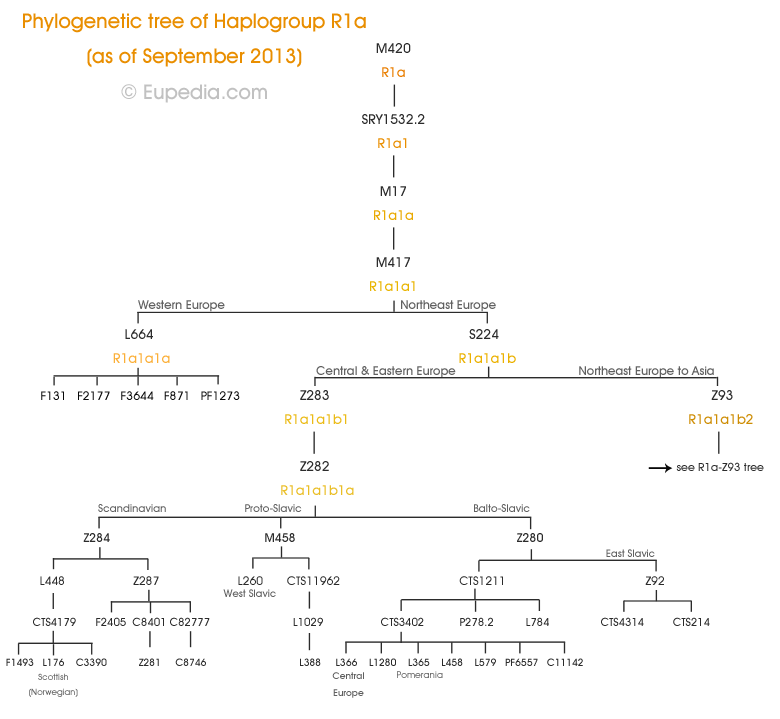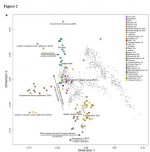R1 populations spread genes for light skin, blond hair and red hair
There is now strong evidence that both R1a and R1b people contributed to the diffusion of the A111T mutation of the SLC24A5, which explains apporximately 35% of skin tone difference between Europeans and Africans, and most variations within South Asia. The distribution pattern of the A111T allele (rs1426654) of matches almost perfectly the spread of Indo-European R1a and R1b lineages around Europe, the Middle East, Central Asia and South Asia. The mutation was probably passed on in the Early neolithic to other Near Eastern populations, which explains why Neolithic farmers in Europe already carried the A111T allele (e.g. Keller 2012 p.4, Lazaridis 2014 suppl. 7), although at lower frequency than modern Europeans and southern Central Asians.
The light skin allele is also found at a range of 15 to 30% in in various ethnic groups in northern sub-Saharan Africa, mostly in the Sahel and savannah zones inhabited by tribes of R1b-V88 cattle herders like the Fulani and the Hausa. This would presuppose that the A111T allele was already present among all R1b people before the Pre-Pottery Neolithic split between V88 and P297. R1a populations have an equally high incidence of this allele as R1b populations. On the other hand, the A111T mutation was absent from the 24,000-year-old R* sample from Siberia, and is absent from most modern R2 populations in Southeast India and Southeast Asia. Consequently, it can be safely assumed that the mutation arose among the R1* lineage during the late Upper Paleolithic, probably some time between 20,000 and 13,000 years ago.
Fair hair was another physical trait associated with the Indo-Europeans. In contrast, the genes for blue eyes were already present among Mesolithic Europeans belonging to Y-haplogroup I. The genes for blond hair are more strongly correlated with the distribution of haplogroup R1a, but those for red hair have not been found in Europe before the Bronze Age, and appear to have been spread primarily by R1b people (=> see The origins of red hair).






